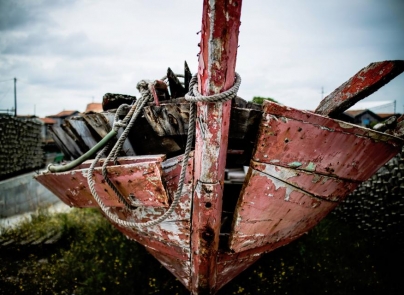Louise de Coligny – a Courageous Woman in Troubled Times

On August 22, 1572, while Paris was lingering in the celebrating mood after the wedding between Henry, King of Navarre, and Marguerite de Valois, sister of King Charles IX of France, 16-year old Louise de Coligny received some terrible news. Her father Gaspard had been shot. Thankfully, he was still alive, saved by the providential decision to bend down just as the gun was fired. The bullet only reached his left arm, tearing a finger off his hand and shattering his elbow.
Any sense of relief she may have felt vanished quickly, as a search for the culprit was accompanied by fierce accusations and a dangerous thirst for vendetta. Whatever unity the wedding of a protestant king and a catholic princess might have represented was too artificial and fragile to survive this attack against one of the most influential Huguenot leaders.
Most of the blame fell on the Catholic family of Guise. After all, the shot came from their house, where the guards found a smoking gun. Immediately, the Huguenots demanded justice. Gaspard’s brother-in-law went as far as gather a 4,000-men army outside of Paris. Feeling threatened, the Catholic leaders pressured King Charles and his mother Catherine de Medici, former Queen regent and still a powerful force behind the throne, to resolve the situation.
No information about the meetings that ensued in the royal gardens has survived. Generally, Charles and his mother have been blamed for ordering a reprisal against the Protestant threats, but there is no certainty.
In any case, it was the people who carried out the blow with the greatest fury, unleashing the anger, hatred, and fear that had been brewing for decades, while the Huguenots (though still a minority) had occupied more and more positions of influence in France.
What followed was one of the most atrocious massacres in France, a spontaneous, unanimous attack that killed approximately 10,000 Huguenots - 2-3,000 in Paris alone. Gaspard de Coligny didn’t escape the fury. A group led by the Guise stormed into his room, pierced him with a sword, threw him off the window and decapitated him. Louise’s husband, Charles de Teligny, was also killed. The couple had been married for just over a year.
Fugitive, Ruler, Mother, and Correspondent
Shocked and frightened, Louise escaped by finding refuge first at Montargis, in the castle of Renée of France, who had also fled the scene, then in Switzerland. She returned to France only in 1576, after King Henry III, who had succeeded his brother Charles IX, proclaimed an edict of temporary amnesty for Huguenots - the Edict of Beaulieu. Louise spent the next seven years at Lierville, a property she had inherited from her husband.
It was there that, in the spring of 1583, she received a proposal of marriage by William of Orange (also known as William the Silent), the Stadtholder of the Seven United Provinces (future Netherlands). She accepted. William, who had been the main leader of the Dutch wars of independence from the Spanish, was 22 years older than Louise, and had been married three times before. William and Louise had a happy marriage and rejoiced at the birth of their son, Henry Frederick. Louise also mothered some of William’s older children. In July 1584, however, their union ended in tragedy when William was killed by a Spanish sympathizer.
Louise continued her tasks as mother, especially to her stepdaughters and her infant son. She also endeavored to restore the kingdom’s finances, which had been depleted by William’s numerous war expenses. Her diplomatic skills were evident, for example, in her negotiations between Henry of Navarre, who became King of France in 1594 (under the name of Henry IV) and her stepson Maurice, who had taken his father’s place as Stadtholder.
William’s death reopened the hostilities between the United Provinces and Spain, with Maurice taking the most radical stance. In 1598, after Henry IV, who had converted to Catholicism for political reasons, proclaimed the Edict of Nantes, giving freedom of worship to the Huguenots, Louise returned to France. Her country, however, was no longer the same. Many of the surviving Huguenots had recanted their religion, turning France into a solid catholic state. In spite of her friendship with the king, Louise was vilified by his catholic courtiers and had to retire again in her territories at Lierville. She died in 1620 at Fontainblue, guest of the elderly Queen Maria de Medici.
Louise’s life followed one of the most troubled times in European history - from the bloody St. Bartholomew’s Massacre to the creation of a new nation, the Netherlands, until the beginning of the Thirty-Years War. The 193 letters which have survived from her abundant correspondence (there were thousands of them, in her estimation) are punctuated by prayers and praises to God and charged with both a keen understanding of the political situation of her times and an overall trust in God’s providence and mercy.





